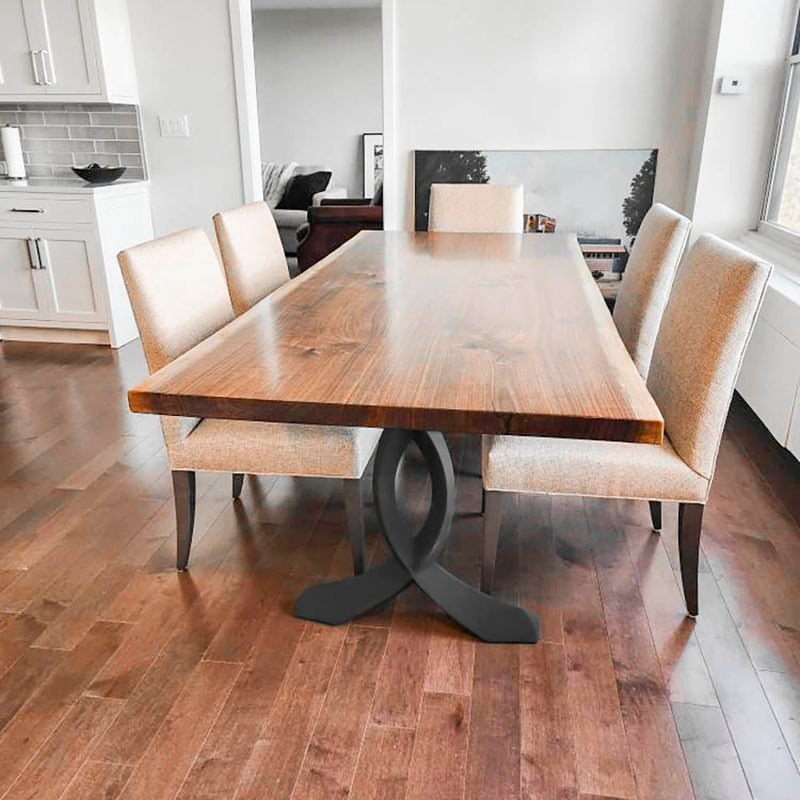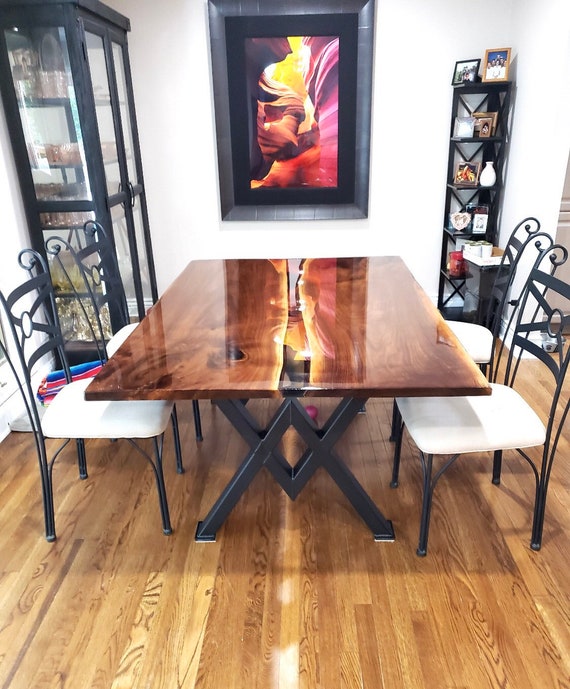Just How to Pick the Perfect Dining Room Table Legs for Your Home Decoration
Choosing the optimal eating area table legs is a nuanced process that calls for cautious factor to consider of numerous elements, including your area restraints, aesthetic preferences, and useful requirements. The interplay in between materials, dimensions, and styles can significantly influence the setting of your dining location, making it essential to approach this choice systematically.
Assess Your Eating Space
Evaluating your dining space is important for picking the right table legs that enhance both aesthetic appeals and functionality. Begin by determining the measurements of your eating area, consisting of ceiling height, flooring space, and distance to other furnishings. This information will certainly help identify the appropriate dimension and elevation of your dining table, which directly affects the option of table legs.
Following, consider the style and design of your dining space. For instance, an open-concept design might take advantage of table legs that supply aesthetic lightness, such as slim metal or acrylic choices. Conversely, a more conventional setting might require sturdy wood legs that offer a feeling of durability.
Examine the existing color scheme and materials in your eating area. Integrating the table legs with these aspects creates a natural appearance that boosts the total style.
Eventually, an extensive analysis of your dining room will lead you in making a notified choice, making sure that your table legs not only improve the visual allure but likewise serve practical functions.
Consider Your Design Preferences
When selecting dining area table legs, it is necessary to assess your personal style choices, as they significantly influence the overall aesthetic of your eating space. Your choice of table legs can either enhance or contrast with existing decoration, making it essential to straighten them with your preferred interior decoration theme.
If your home leans towards a modern aesthetic, consider smooth steel or minimalist wood legs that provide a tidy, minimalist look. For a more conventional approach, luxuriant wooden legs with intricate carvings can add a touch of sophistication and refinement. Industrial styles gain from robust, raw materials such as reclaimed timber and steel mixes, mirroring a rugged beauty.
In addition, farmhouse and rustic designs usually favor tough, beefy legs that stimulate a feeling of warmth and convenience. Alternatively, if your decoration is diverse, you may select unique forms or a mix of materials to develop aesthetic passion.

Evaluate Material Options
The option of product for eating room table legs plays an essential role in both sturdiness and visual allure. Typical materials consist of wood, steel, and composite alternatives, each offering distinct attributes that can influence the total appearance and longevity of your table.
Timber is a traditional selection, known for its warmth and flexibility. Woods like oak and walnut provide remarkable toughness and can be finished in numerous discolorations to match any kind of style. Nevertheless, softwoods like pine are a lot more susceptible to scratches and dents, making them much less suitable for high-traffic locations.
Steel legs, commonly crafted from steel or aluminum, exude modernity and industrial appeal. They are immune and extremely sturdy to use, making them ideal for households with kids or frequent events (dining room table legs). Furthermore, steel can be ended up in various colors, enhancing the customization opportunities
Composite products, such as MDF or laminate, offer affordability and varied styles. While usually less durable than solid wood or metal, they can still provide a stylish look and are typically simple to preserve.
Eventually, the product you choose should align with your lifestyle, visual choices, and the level of use your dining table will certainly experience.
Determine Height and Dimension
Selecting the ideal elevation and dimension for your dining-room table is necessary for both performance and convenience. The basic elevation for eating tables commonly varies from 28 to 30 inches, allowing enough legroom for many people when seated. It is vital to consider the dimensions of your dining area and the types of chairs you prepare to utilize.

Moreover, take into consideration the percentages of your dining area. A bigger table in a sizable location can develop a grand ambiance, while a smaller sized table works well in even more intimate setups. Eventually, the best elevation and size will integrate with your overall decor and boost the dining experience for you and your guests.
Explore Personalization Opportunities

In addition, the design of the legs can be personalized to fit numerous designs, such as rustic, modern-day, or industrial. For circumstances, tapered legs can stimulate a mid-century contemporary feeling, while chunky, block-style legs might resonate with conventional or farmhouse design.
Homeowners can likewise check out color finishes, from all-natural timber stains to paint, enabling them to match or contrast with the tabletop and bordering design.
Furthermore, leg elevation can be adapted to suit particular seating setups or individual choices, improving both comfort and functionality.
Last but not least, distinct embellishments, such as makings or ornamental brackets, can better personalize the table legs, making the dining experience not simply a declaration yet a dish piece in the home. By thinking about these modification alternatives, house owners can develop a dining area table that absolutely reflects their uniqueness.
Final Thought
Selecting the perfect dining-room table legs calls for mindful factor to consider of different factors, consisting of the dimensions of the eating room, design choices, product resilience, and wanted elevation. Customization choices better enhance the ability to attain a natural visual that complements the general decor. By systematically evaluating these aspects, home owners can make sure that the picked table legs not just satisfy functional requirements but likewise add positively to the dining experience and setting of the home.
Picking the optimal eating space table legs is a nuanced process that needs careful consideration of numerous components, including your area constraints, visual choices, and practical needs.Analyzing your eating room is essential for choosing the right table legs that enhance both looks and functionality.When figuring out dimension, gauge the area where the table will be put to guarantee it fits easily, allowing for at the very least 36 inches of clearance around the table for easy movement. A bigger table in a large location can create a grand ambiance, while a smaller sized table functions well in even more intimate setups.Selecting the suitable dining area table legs calls for mindful factor to consider of different aspects, including the measurements of the dining room, style preferences, product durability, and you can find out more desired elevation.